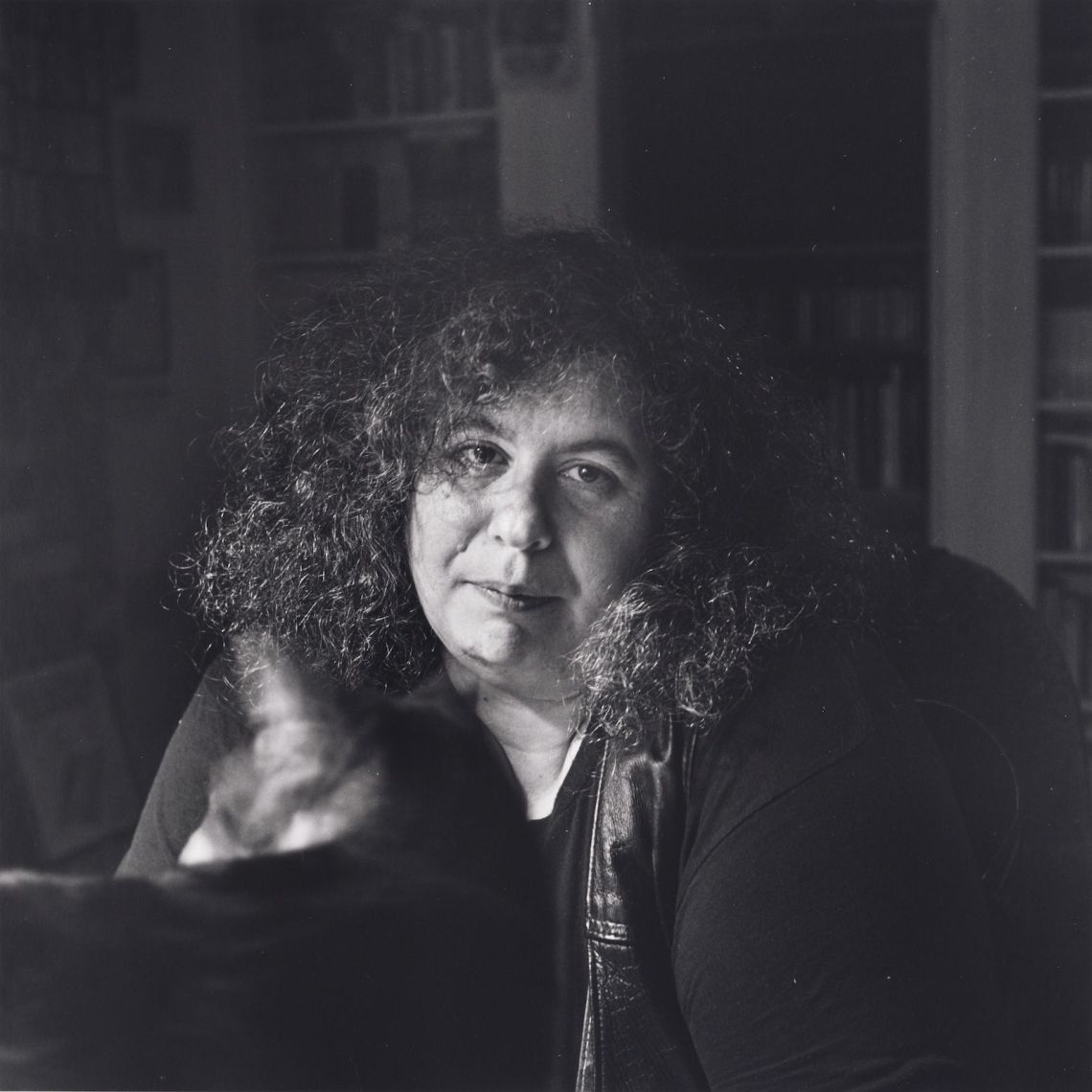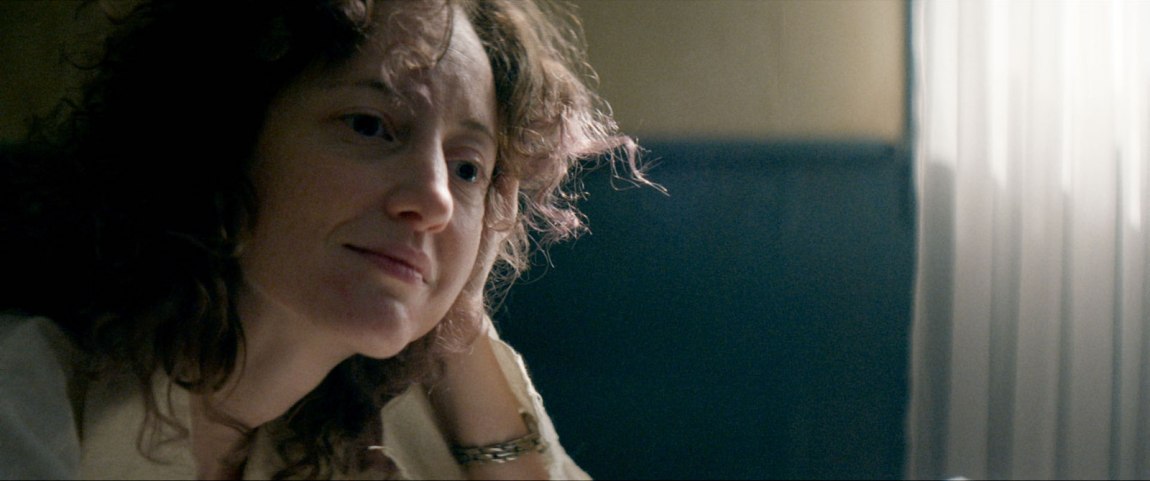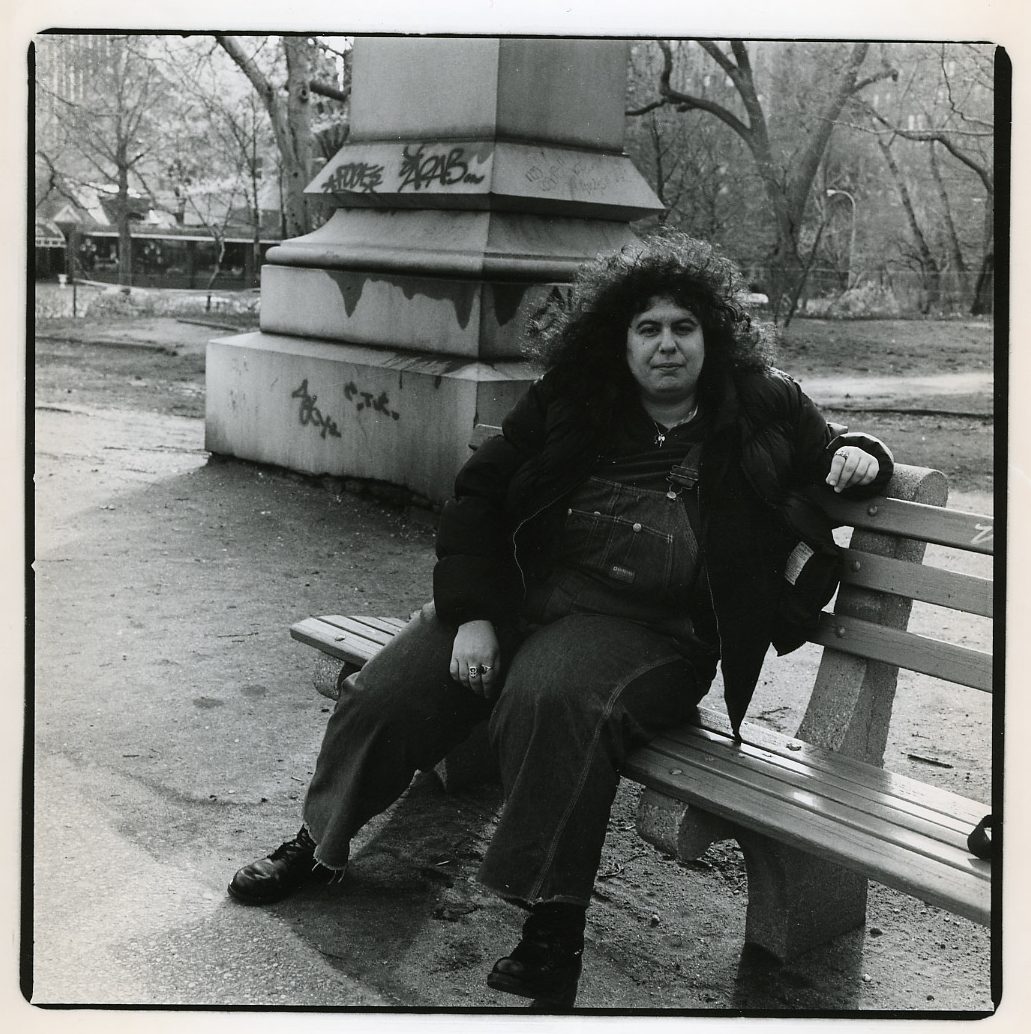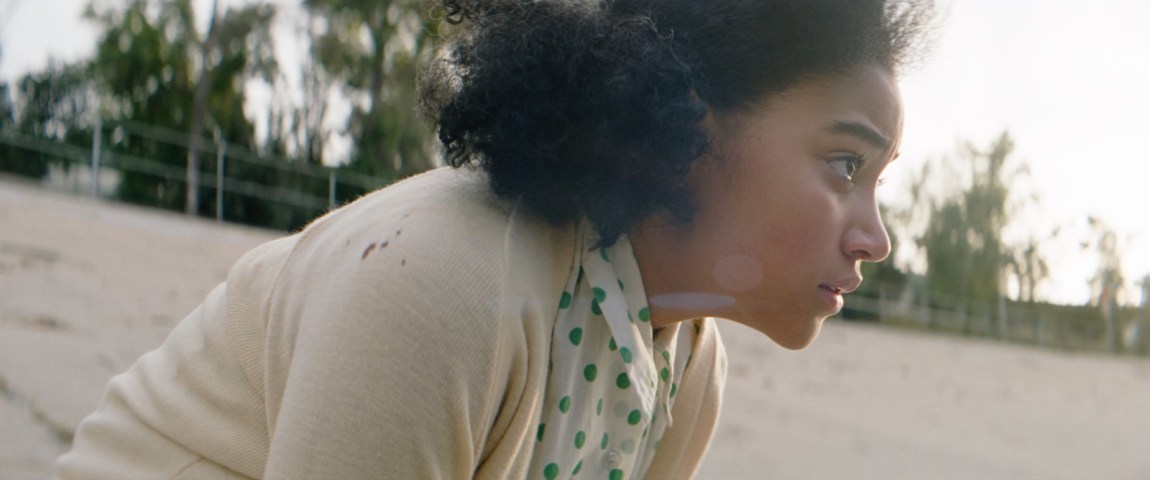Once, when explaining—that is to say, justifying—my interest in Andrea Dworkin to a receptive acquaintance, I began by insisting on Dworkin’s literariness. It seemed a less perilous way to recuperate her in their esteem than her politics. Literariness can be curious, ahistorical, a supple cover for all kinds of quirks, under which the unseemly or obsolete assumes the less threatening guise of idiosyncrasy. Politics must clear a different hurdle; we tend to demand they hold up to scrutiny in the present tense. Dworkin’s, I conceded, don’t, or at least not as we’ve inherited them. But she could write. She could write about books, even! My favorite Dworkin essay—I continued, courting my friend’s skepticism—is a piece of literary criticism about Wuthering Heights. She was a brilliant close reader. Dworkin, the polemicist? Dworkin, metonym for an outmoded Second Wave stridency?
Any such conversation owes some credit to Johanna Fateman, who first began making Dworkin available to contemporary feminist thought with an essay in the 2014 anthology Icon and later with Last Days at Hot Slit, a 2019 selection of Dworkin’s writings she coedited with Amy Scholder. The raft of coverage about Last Days made me realize that by easing into Dworkin through literature I was implicitly apologizing for her, not critiquing so much as denying the politics that formed the core of her life’s work. She wanted badly to be a writer, but she wanted even more to end male supremacy and its attendant order of sexual division—in all its forms, but especially as it manifested in rape and circulated as pornography. There’s no way to see her clearly without focusing on these commitments. Reviewing Fateman and Scholder’s book in the years of Me Too and Trump, feminist critics found more than they expected or remembered in Dworkin’s thinking. Much of it rankled, but much of it resonated, too. All of it was still hot to the touch.
With a few years’ distance from those reviews, I’m again less certain where the stress should fall. From a young age, Dworkin treated literature and social change as a single aspiration. In Martin Duberman’s 2020 biography of Dworkin, he quotes a 1965 letter to her mother in which she, at eighteen, envisions “a world without institutionalized murder and systematic cruelty. I imagined that I could write a book that would make such a world possible.” Her 1974 debut, Woman Hating, keeps faith with that dream from its opening line: “This book is an action, a political action where revolution is the goal.” Wuthering Heights’s appeal to Dworkin is not surprising. She praises the novel as an “emotionally haunting, physically graphic rendering of sadism as well as an analytical dissection of it,” the kind of thing she herself might have tried to write.
The occasions for reassessment keep coming. A new documentary, My Name Is Andrea, has been touring the festival circuit since its premiere at Tribeca last June. (Scholder is among its executive producers and—full disclosure—my former boss.) The film is most valuable for its conviction that Dworkin’s dual commitment to language and politics constituted a single thread running taut through the length of her life. Pratibha Parmar, the film’s writer and director, dispenses with the celebratory filler that clogs so many documentaries about activists and underdogs. No talking heads appear to insist on our subject’s enduring significance. Parmar did enlist the actors Ashley Judd, Amandla Stenberg, Soko, Christine Lahti, and Andrea Riseborough to embody Dworkin onscreen (and, one suspects, to lend the project some star quality), but the words they speak are Dworkin’s own. The actors’ task is modest: they compensate for the limits of the archival footage and recordings that constitute the rest of what we see and hear, smoothing over gaps where Dworkin’s own voice and image can’t be summoned.
*
My Name Is Andrea has nothing so neat or comprehensive as an introduction. There is no gliding survey of Dworkin’s climactic trials and achievements, no teaser of controversies to come. Instead, after a few general statements of purpose—“I’m outraged that women are treated the way we are in this society; I think it’s wrong; I want it changed,” she tells an interviewer in 1991—and some clips of her years as an itinerant lecturer, we begin at the beginning and proceed more or less as Dworkin did, experience by experience, insight by insight. When the film expands to include a wider swath of history, it does so in relation to her own evolving point of view.
The great payoff of Parmar’s tight focus is that Dworkin’s most incendiary rhetoric, so often lampooned or dismissed as excessive, instead appears inevitable: we encounter her words as a reasonable response to what she lived through. She was born in Camden, New Jersey—“the heart of suburbia”—in 1946. Her memories of this period play over home movies in which she smiles sociably in prim floral dresses, but she was a natural dissident: her introduction to public speaking came in Hebrew school, where she denounced the “unfair distribution of wealth” among Jews. Vietnam impinged on this world in 1963, through the televised image of a Buddhist monk’s self-immolation. For teenage Dworkin, already an aspiring writer, the gesture traced language’s limit, condemning the failure of speech to slow an escalating war. She saw the flames engulfing the monk as a kind of communication, expressing “pain past words.”
Advertisement
Like many women’s liberationists, Dworkin came to radical politics by way of the antiwar movement, the New Left, and Black Power. The film lingers on these influences. Significant time is given to Dworkin’s impassioned descriptions of Frantz Fanon and Huey Newton, from whom she learned not just methods of analysis but modes of address—especially a colloquial, swaggering style, a way of playing rhetorical offense, which she spent her career honing. Parallel instruction came from the arts. She admired Bach for his “repetition, variation, risk, originality, and commitment…I wanted to do that with writing.” The male gods of the countercultural pantheon—Lawrence, Genet, Miller, Baldwin—were hers, too. Allen Ginsberg, whom she met at a 1967 reading at St. Mark’s Church, encouraged her as a poet.
A series of sexual traumas laid the groundwork for her later feminist awakening. At nine, she was molested by a stranger the first time she was allowed to go to the movies alone. The experience initiated her into the ubiquity of male predation as well as the overwhelming cultural taboo against acknowledging it: her mother’s panicked and disbelieving reaction is followed in the film by a BBC broadcaster asking Dworkin decades later, “How did you get yourself into that position?” At eighteen, Dworkin was arrested during a sit-in against US involvement in Vietnam and subjected to a violent gynecological “exam” by prison doctors at the Women’s House of Detention in Greenwich Village. With the support of the veteran activist and writer Grace Paley, Dworkin began both to articulate the gendered contours of her violation and to raise awareness about it, mounting a media campaign exposing the conditions at the prison. (In Parmar’s film, Paley is referred to only as “this woman from the peace movement.” Despite the namechecking of male influences, My Name Is Andrea is puzzlingly silent on Dworkin’s feminist mentors. In addition to Paley, she received crucial support in early adulthood from Muriel Rukeyser and Barbara Deming.)
Dworkin was stung by the disinterest of “the antiwar boys” in her pain, but it did not immediately disillusion her with men as comrades or lovers. When she moved to Europe in 1968, Amsterdam initially offered a countercultural swirl of art, protest, and sex. (“I liked revolution as foreplay.”) Her marriage to a man from this scene, Iwan de Bruin, abruptly turned nightmarish. He beat her often and with impunity; neighbors, doctors, and Dworkin’s own parents witnessed or overheard his abuse but declined to intervene. Again she came up against the limits of language: she tried to ask for help but “my words didn’t seem to mean anything.”
After her escape, her friend and collaborator Ricki Abrams introduced Dworkin to a new feminist literature emerging in the US. These books were actions. Upon reading Kate Millett’s Sexual Politics, Dworkin reflected, “I was no longer a woman as I had been a woman before.” Like Fanon and Newton, Millett gave Dworkin both a new theoretical apparatus and a new vocabulary. In her fervor she pledged her life and talents to the women’s movement. Despite the long series of discouragements that followed, she never broke that promise.
*
The second half of My Name Is Andrea reviews Dworkin’s public career, and here the risks of Parmar’s approach become evident, even as her film remains powerful. It is strongest on those aspects of Dworkin’s thought that emerged most directly from the experiences of her early life: her sensitivity to the dynamics of silencing and the consequent value of personal testimony in combating oppression; her insistence on the pervasiveness of sexual violence; her analysis of how that violence both expresses and enforces a larger, more encompassing sexual hierarchy; her conviction that hierarchy was not inevitable but learned, and could therefore be unlearned. While the film pays little explicit attention to Dworkin’s fiction writing, the actors read excerpts from her 1990 novel Mercy, so her imaginative range and the experimental intensity of her prose come through, too. But as My Name Is Andrea tracks Dworkin’s passage through the increasingly reactionary cultural landscape of the 1980s and 1990s, it struggles to capture the tenor and pitch of controversy that she provoked among feminists themselves. The film’s close commitment to Dworkin’s own perspective results in a vivid portrait of her as a speaker and fighter but conveys a less substantial impression of the intellectual terrain on which she fought.
Advertisement
One of the film’s more unfortunate if understandable gaps concerns Dworkin’s ambiguous relationship to transgender politics: understandable because trans issues were not among her sustained preoccupations; unfortunate because her amenability or hostility to trans liberation seems to me to have become a point of recurrent debate among younger feminists and queers, especially since the publication of Last Days. As part of its culminating argument for an androgynous alternative to “polar role definitions of male and female,” Dworkin’s first book explicitly avowed that “every transsexual is entitled to a sex-change operation, and it should be provided by the community as one of its functions.” Both Duberman and her partner John Stoltenberg maintain that Dworkin never wavered from this position, and Stoltenberg has made a proactive effort in recent years to reframe her politics as explicitly trans-inclusive.
Duberman’s biography doesn’t mention that Dworkin furnished a positive blurb for Janice Raymond’s The Transsexual Empire (1979), which was instrumental in formalizing and disseminating transphobia in a feminist guise, though he does acknowledge that the two writers corresponded “for a time.” Conscious that friendship might imply agreement, Duberman quotes at length from a 1978 letter to Raymond in which Dworkin expresses her empathy, even identification, with trans people she met during her years in Europe: “The means were different, but [our] impulses were related. I haven’t changed my mind.”
As with so much else about her legacy, contemporary interpreters tend to see in these shards whichever version of Dworkin best suits their—our—current needs or larger beliefs about her generation of feminists. It’s true that some of Dworkin’s writings seem to define womanhood by sexual vulnerability and manhood by the violent deployment of a literal penis, which chimes uncomfortably with “gender critical” fearmongering about trans people in women’s spaces. But Dworkin rejected the patriarchal equation of anatomy with identity, and she warned feminists against reiterating it in new terms. She was desperate to protect women but had no interest in defending the category “woman.” For what it’s worth, I’ve always found 1970s feminist writing about androgyny—by Dworkin, Carolyn Heilbrun, Toni Cade Bambara, and others—enabling of rather than threatening to a trans-affirming political vision, whatever those thinkers may otherwise have said or failed to say about trans people. In Woman Hating, Dworkin imagined a “road to freedom open to women, men, and that emerging majority, the rest of us.”
*
More familiar to casual viewers will be Dworkin’s hardline opposition to pornography, which by the late 1970s had become central to her understanding of how sexism perpetuates itself. “Pornography gives us the absolute groundwork ideology of male supremacy,” we hear Dworkin tell an interviewer in My Name Is Andrea, which offers a compressed account of this phase of her career. In her breakout book Pornography: Men Possessing Women (1981), she argued that porn represents, advocates, and literally enacts violence against women: the degradation of actors onscreen degrades the actors onscreen, but it also perpetuates the “sexualized subordination” of all women by assuring male viewers that women desire to be degraded.
Dworkin’s anti-pornography campaign was as controversial for its strategy as for its intellectual underpinnings. With the legal scholar Catharine MacKinnon, she attempted to pass a series of city-level ordinances framing pornography as a civil rights issue for women. These ordinances would have given anyone who felt they had been harmed by pornography grounds on which to sue pornographers for damages; they would not have criminalized pornography or authorized direct state censorship. This distinction, though vitally important to Dworkin and MacKinnon, did little to reassure feminists who feared that any effort to enlist the law in the regulation of sexually explicit media would only hurt women and queers. Ellen Willis, one of Dworkin’s most rigorous feminist detractors, warned that anti-porn activism posed a threat both to the First Amendment and to the integrity of the women’s movement, widening its “good girl–bad girl split.”
Wisely, My Name Is Andrea incorporates more voices into its second half than its first, sampling the heated dissensus around pornography in the 1980s and 1990s. MacKinnon and Dworkin explain their ordinance on a TV news segment; another newscaster announces its veto by the Minneapolis mayor. A clip from a televised interview with Carole Vance, organizer of the notoriously contentious 1982 Barnard Conference on Sexuality, stands in for a larger chorus of feminist opposition:
I think we use this word “pornography” at our own peril. We each use it believing we mean the same thing as the other person; we almost never do. Pornography includes sex-education material; it includes gay and lesbian literature; it would include a great deal of recent feminist art and literature as well.
It’s an admirably tight and cogent soundbite, but too brief—and perhaps too diplomatic—to reflect just how caustic these disputes became.
Minimizing the porn wars turns out to have been Parmar’s intent. In a conversation with Alexandra Juhasz, Parmar notes how thoroughly pornography has come to define Dworkin. “This was not a debate I wanted to foreground,” she says; “I did want to foreground her as a powerful writer and activist who eviscerated the impact of systemic patriarchal violence.” I share Parmar’s frustration with the single-mindedness of many retrospective judgments of Dworkin, but I’m less sure that porn can be disentangled from those threads of her work in which the film is clearly more interested. To Dworkin, pornography and violence were not discrete phenomena, and her feminist disputants homed in on this conflation of “real” violence with the “fantasies” expressed in sadomasochistic writing, imagery, and sexual play. Faced with objections of this kind, Dworkin tended to insist that pornography was more “central to the male sexual system” than her critics allowed. In Pornography she claims that it turns man into a “missionary” for sexual domination and woman into a “metaphysical victim”: “Wanting her means wanting pornography. Being her means being pornography.”
Though My Name Is Andrea rushes through Dworkin’s conflicts with other feminists, we are shown quite a bit of the hostility she weathered in the mainstream press. Snippets from a wounded and wounding breakup letter to anti-censorship feminists flash across the screen: “Goodbye to stupid feminist academics…Goodbye Ellen, baaad baaad Ellen, naughty girl.” And yet when confronted with incomprehension or outright derision in public, face-to-face dialogue, Dworkin was heartbreakingly patient, even generous. In the film’s many clips from radio interviews and TV shows, she never softens or apologizes for her positions, but she does take great pains to make them intelligible. You can see her despair when such efforts go unrewarded. On The Phil Donahue Show in 1987, a woman in the audience asks her, “What tragic thing happened in your life that made you feel this way?” Dworkin smiles through a deflating sigh, a response as improbable as it is relatable.
Dworkin was often dismissed as analytically crude and rhetorically divisive, but her books have always been most useful to me for their insistence that patriarchy itself imposes crudeness and division. It herds vast human capacity into narrow pens of the permissible, by seduction or force. We call those pens gender, and they keep us from each other. On Donahue, they kept Dworkin (an escapee from gender) from her questioner (who seemed at home in it). My favorite Dworkin essay—the one about Wuthering Heights—was written that year, around the height of her notoriety. She writes of Cathy and Heathcliff, “Together, they are human, a human whole, the self twice over; apart, each is insanely, horribly alone, a self disfigured from separation, mutilated.”






